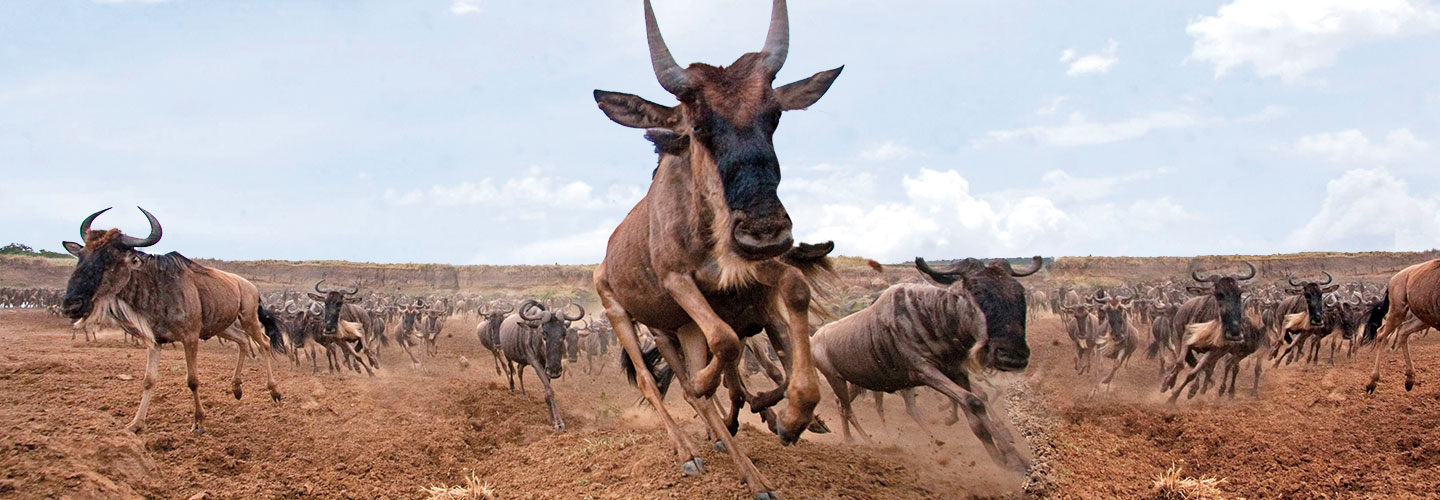The ground rumbles. Hooves pound the dirt. Dust clouds fill the air. More than a million wildebeests are making their annual migration from Kenya to Tanzania in Africa. They must cross rushing rivers where crocodiles lurk and wide-open plains where hungry cheetahs roam. But that won’t stop them. The wildebeests are on a mission to find their next meal.
Wildebeests must migrate across Africa’s grasslands to find food and water. They’re leaving their current spot in Kenya because they’ve gobbled up most of the grasses there. Now it’s off to the southern plains of the Serengeti, a region in eastern Africa. It’s time to find some fresh grasses to nibble on.
Dr. Grant Hopcraft is a professor at the University of Glasgow in England who studies the migration. He describes the scene, saying, “You see all those wildebeests in one place. Everywhere you look, there are animals—almost shoulder to shoulder.”
Meanwhile, in southern Africa, thousands of Burchell’s zebras hoof it from Namibia to Botswana. They’re on the hunt for a grassy meal too. The zebras’ annual round-trip migration covers more than 300 miles—that’s about 150 miles each way. It’s the longest nonstop land mammal migration on the continent!

